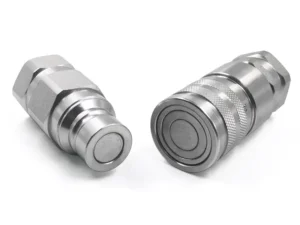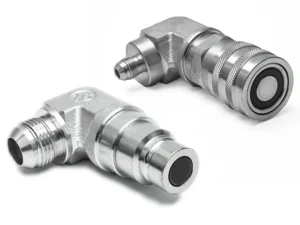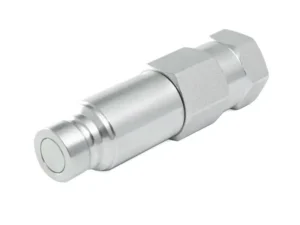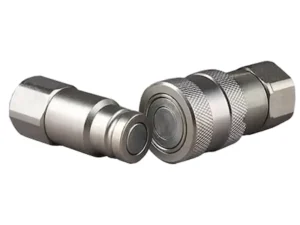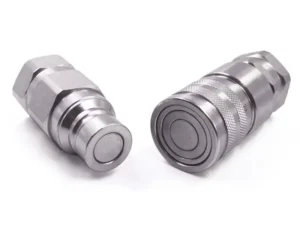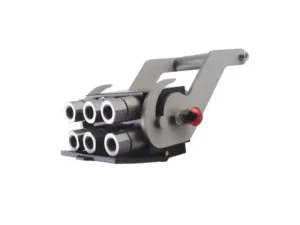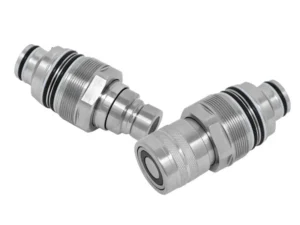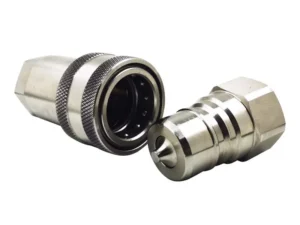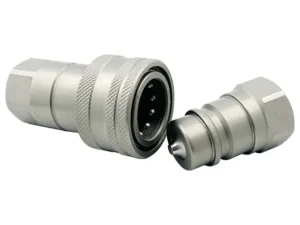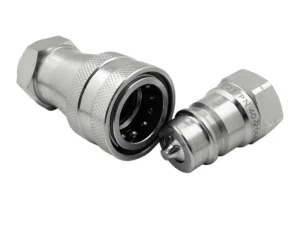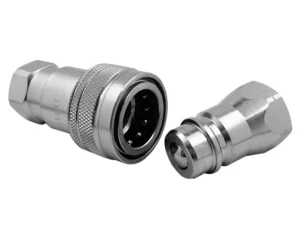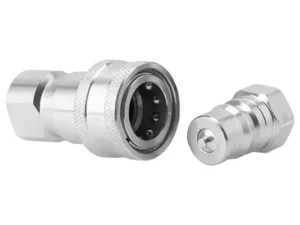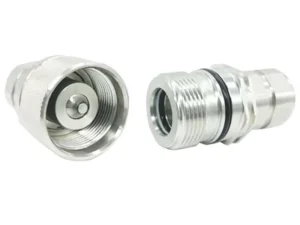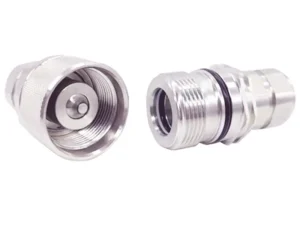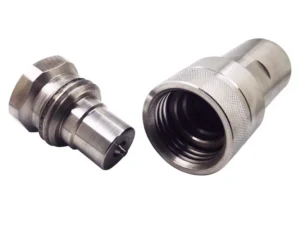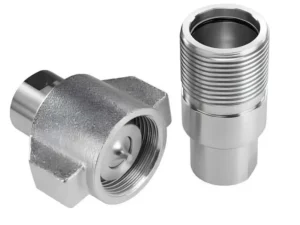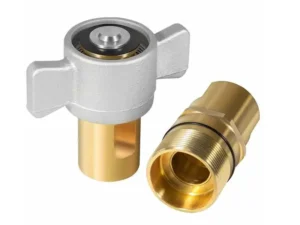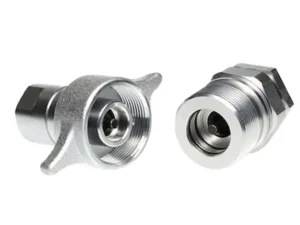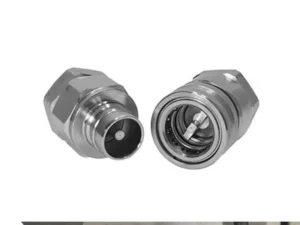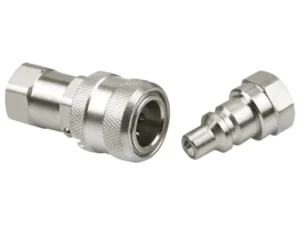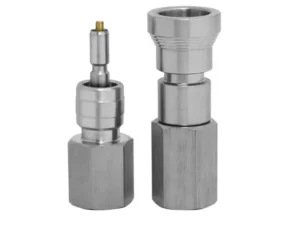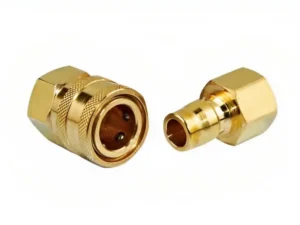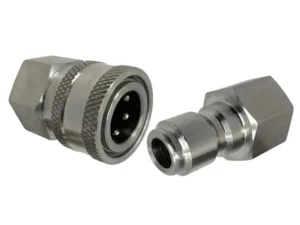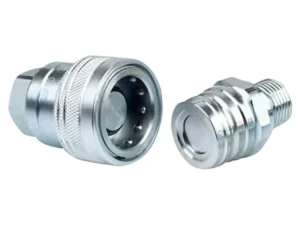Quick couplings will be used in different environments. Hydraulic quick couplings are not only used in hydraulic systems but have also been extended to pass a variety of different fluids. For different fluids, users need to choose different materials and sealing ring materials. There are also other factors, such as working pressure, temperature, and other factors that affect users’ choice of different materials.
Fluid type
What fluid will be passing through the coupling? Different fluids have different compatibility requirements with materials. For example, you’ll need a different material for oil than for water or chemicals. Different fluids not only affect the choice of body materials but also the selection of sealing materials

Pressure
What pressure will the coupling be under? Higher pressures require more robust materials. Work pressure usually affects the choice of body materials
Temperature
What temperature range will the coupling operate in? Some materials are more resistant to heat than others. For temperature, the sealing material has a greater impact. Usually, the body material of a hydraulic quick connector is metal material, and the temperature of the liquid will not exceed the metal material.
| Material |
Temperature Range |
Recommended Use |
Not Recommend For Use |
| Nitrile (NBR)* |
-30˚F to 250˚F(-34˚C to 121˚C) |
- Petroleum oils and fluids
- Diesel fuel and fuel oils
- Cold water
- Silicone oil and grease
- Mineral oil and grease
- Vegetable oil
- HFA, HFB and HFC fluids
|
- Aromatic hydrocarbons
- Chlorinated hydrocarbons
- Polar solvents (MEK, ketone, acetone)
- Phosphate ester fluids
- Strong acids
- Automotive brake fluid
|
| Low-Temperature Nitrile (NBR) |
-65°F to 225°F (-55°C to 107°C) |
| Clean Grade Nitrile NBR |
-30°F to 250°F (-34°C to 121°C) |
- Potable water
- Food service
|
| Hydrogenated Nitrile (HNBR) |
-23°F to 300°F (-32°C to 149°C) |
- Diesel fuel and fuel oils
- Dilute acids and bases
|
| Fluorocarbon (FKM) |
-15°F to 400°F (-26°C to 205°C) |
- Petroleum oils and fluids
- Cold water
- Silicone greases and oils
- Aliphatic hydrocarbons
- Aromatic hydrocarbons
- Fuels
- Fuels with methanol content
|
- Glycol-based brake fluids
- Ammonia gas, amines, alkalis
- Superheated steam
- Low molecular organic acids
|
| Ethylene Propylene Rubber (EPDM) |
-70°F to 250°F (-57°C to 121°C) |
- Hot water
- Glycol-based brake fluids
- Many organic and inorganic acids
- Cleaning agents
- Soda and potassium alkalis
- Phosphate ester-based fluids
- Many polar solvents
|
- Petroleum oils and fluids
- Mineral oil products
|

| Materials |
Advantages |
Disadvantages |
| Carbon Steel |
- High strength and durability: Carbon steel can withstand high pressures and temperatures, making it suitable for demanding hydraulic applications.
- Affordability: Compared to other materials like stainless steel, carbon steel is more cost-effective.
- Good machinability: Carbon steel is relatively easy to machine, allowing for the creation of complex coupling designs.
|
- Susceptibility to corrosion: Carbon steel is prone to rust and corrosion, especially in humid environments or when exposed to certain chemicals. This can shorten the lifespan of the coupling and lead to leaks.
- Not suitable for all fluids: Carbon steel is not compatible with all fluids, such as some aggressive chemicals or high-purity liquids.
- Heavier weight: Compared to other materials like aluminum, carbon steel is heavier, which can be a disadvantage in some applications.
|
| Brass |
- Corrosion resistance: Brass is more corrosion-resistant than carbon steel, making it suitable for use with water-based fluids, mild acids, and alkalis. This can be advantageous in environments with moderate humidity or occasional exposure to mild chemicals.
- Lighter weight: Brass is lighter than both carbon steel and stainless steel, which can be beneficial for applications where weight is a concern. This can be relevant for portable equipment or where handling heavier couplings might be inconvenient.
- Good machinability: Brass is relatively easy to machine, allowing for the creation of complex coupling designs with precise tolerances. This can be important for ensuring proper sealing and performance.
- Lower cost: In some cases, brass can be a more cost-effective option than other materials like stainless steel. This can be a factor when budget is a primary concern.
|
- Lower strength: Compared to carbon steel and stainless steel, brass has lower tensile strength and is less resistant to high pressures. This means it may not be suitable for demanding hydraulic applications with high-pressure requirements.
- Susceptibility to dezincification: Certain factors, like exposure to acidic or ammonia-containing environments, can cause dezincification in brass, leading to a loss of zinc and weakening of the material. This can impact the long-term performance and integrity of the coupling.
- Temperature limitations: Brass generally has lower temperature limits than some other materials used for hydraulic couplings. This may limit its suitability for applications involving high operating temperatures.
|
| Stainless steel |
- Superior Strength and Durability: Stainless steel boasts high tensile strength and resists high pressures, making it ideal for demanding hydraulic applications. This translates to a longer lifespan and reliable performance even under strenuous conditions.
- Outstanding Corrosion Resistance: Stainless steel’s inherent resistance to corrosion, particularly against water, salts, and many chemicals, makes it ideal for harsh environments like marine applications or exposure to aggressive fluids. This minimizes maintenance needs and prevents leaks.
- Elevated Temperature Resistance: Different grades of stainless steel offer varying degrees of temperature resistance, allowing you to choose the most suitable option for your specific application’s thermal demands.
- Good Hygiene Properties: Stainless steel’s smooth surface and inherent resistance to bacterial growth make it a preferred choice for applications requiring high hygiene standards, such as food and beverage processing or medical equipment.
- Easy Maintenance: The smooth surface of stainless steel facilitates cleaning and prevents grime buildup, simplifying maintenance and reducing downtime.
|
- Higher Cost: Compared to carbon steel or brass, stainless steel is generally more expensive, which can be a factor in budget-conscious applications.
- Weight: Stainless steel is heavier than some other materials like aluminum, which might be a concern for portability or weight-sensitive applications.
- Susceptibility to Galvanic Corrosion: When paired with certain metals, stainless steel can experience galvanic corrosion. Choosing the right grade and avoiding incompatible metal combinations is crucial to prevent this.
- Different Grades with Varying Properties: Various grades of stainless steel exist, each with specific strengths, corrosion resistance, and temperature ratings. Selecting the most appropriate grade for your application is essential to ensure optimal performance.
|
download for more fluid


